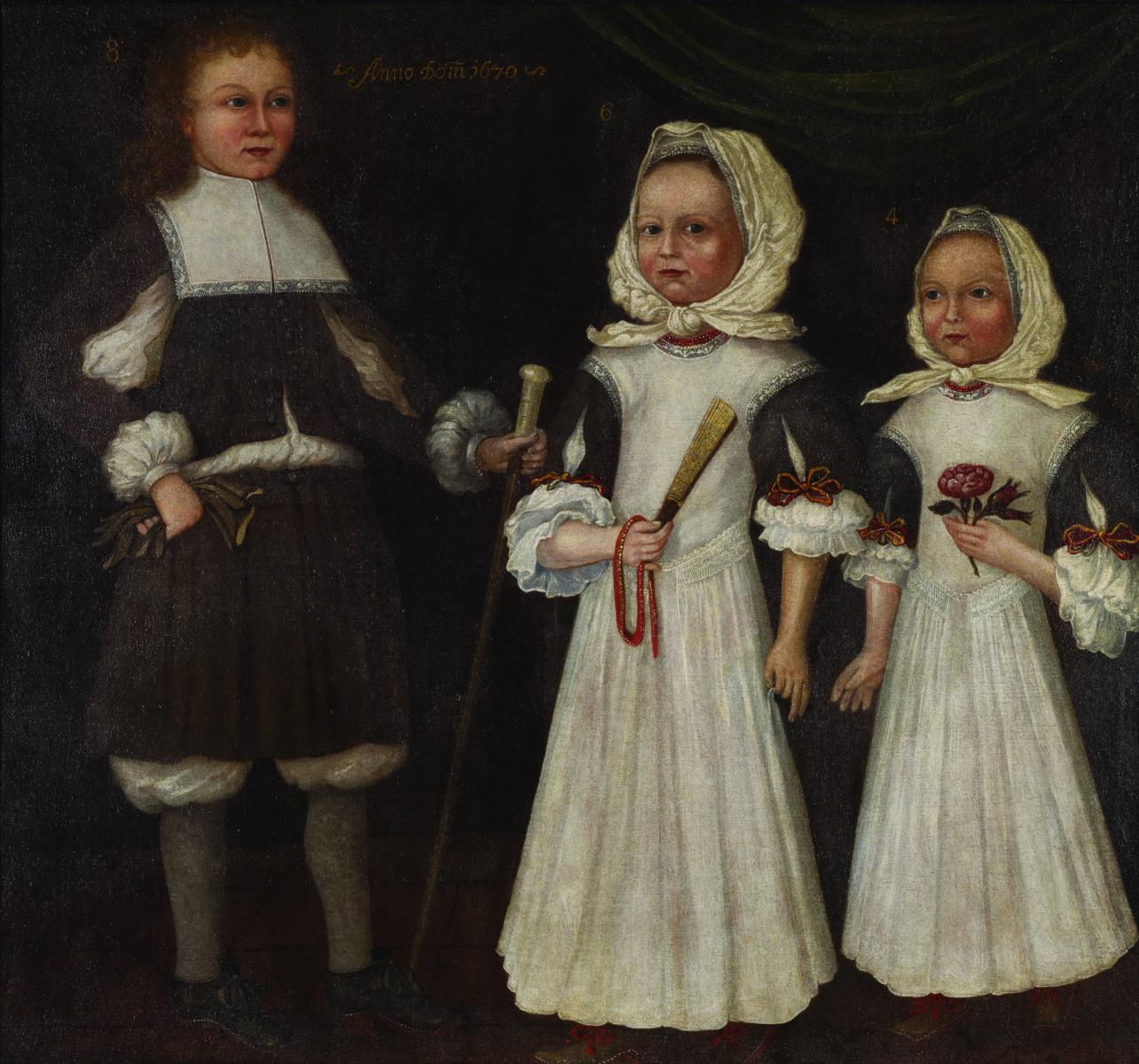Maria Maytilda Winkler (Mrs. Nicholas Gouverneur)

How do portraits document history?
Although Maria was of Dutch origin, the model for her posture and attributes was English. This painter used an English portrait print as his source material, but he used some invention in the way Maria turns her head and the depiction of the parklike setting. The rest of the painting features elements copied from the English print, such as the garland she holds and the lamb that nuzzles sweetly against her. Such visual quotations were common practice among artists in the New World at the time.
